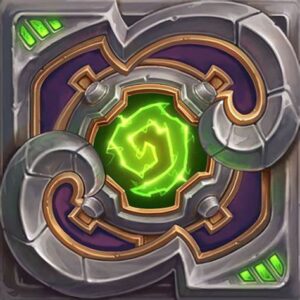 Hearthstone: With Monitoring, it can be an engaging game for kids.
Hearthstone: With Monitoring, it can be an engaging game for kids.
“Hearthstone” is an online collectible card game that is not inherently dangerous to kids. There are some potential risks for children associated with playing this game that parents should be aware of:
“Hearthstone” is designed to be highly engaging and can be played for long periods. It offer in-app purchases involving microtransactions that allow players to purchase new cards and other items.
Note: Kids may not understand the value of money and may spend a lot of real money on virtual items without their parents’ knowledge. There is a gambling-like mechanic with the game which involves opening virtual card packs that have random chances of containing rare cards.
Overall, “Hearthstone” is a fun and engaging game that can provide hours of entertainment for kids. It’s important to remember that parents have the ultimate responsibility for what games their children play and how much time they spend playing them.
Parent Strategies:
Hearthstone is rated for players ages 13 and up. Parents should consider the maturity and age appropriateness of the game for their child. Maintain open communication with your child about their gaming habits and experiences. Discuss the game’s content, potential risks, and responsible gaming practices.
Time Management: Set limits on screen time and establish rules regarding when and how long your child can play Hearthstone. Encourage breaks, physical activity, and engagement in other activities.
Parental Controls: Utilize parental control features on gaming platforms and devices to manage access, screen time, and in-app purchases. Regularly check on your children’s gameplay, observe their interactions with other players, and ensure they are playing in a safe and respectful environment.
Education: Teach your children about responsible gaming, the risks of excessive play and in-app purchases, and online safety. Encourage a healthy balance between gaming and other activities.
Here’s a guide on how to play Hearthstone, along with some strategies and objectives.
Objective: In Hearthstone, players take on the role of a hero and engage in strategic card-based battles against other players. The goal is to reduce the opponent’s health to zero by playing and strategically utilizing cards with various abilities and effects, making smart decisions throughout the game.
Gameplay: Players build decks of 30 cards from their collection, which they can acquire through gameplay or in-app purchases. Each turn, players draw cards, play cards, use hero powers, and strategically make decisions to outwit their opponents.
Strategies: Hearthstone requires strategic thinking, deck building, resource management, and anticipating the opponent’s moves. Players need to carefully consider their card choices, timing, and overall game plan to achieve victory.
Mana Crystals: Mana is the resource used to play cards. At the start of each turn, you gain one additional mana crystal, allowing you to play more powerful cards as the game progresses.
Card Types: Hearthstone has different card types, including minions (creatures that can attack), spells (one-time effects), weapons (used by heroes to attack), and hero cards (transforming your hero and granting new abilities).
Health and Armor: You start with 30 health, and some cards can provide armor, which absorbs incoming damage.
Turns: The game is played in turns, with players taking alternating actions until one player achieves victory.
Strategies:
Deck Building: Construct a deck that synergizes well with your chosen hero class. Consider the mana curve (the distribution of cards at different mana costs), card synergies, and win conditions.
Resource Management: Efficiently use your mana each turn to maximize your plays. Balance card advantage, board presence, removal options, defensive tools
Card Draw: Include cards that allow you to draw additional cards, as card advantage is vital for maintaining options and resources throughout the game.
Board Control: Establish and maintain control of the game board by deploying minions, using spells, and removing your opponent’s threats.
Minion Trading: Make favorable trades by utilizing your minions’ abilities, positioning, and attack values to gain an advantage.
Timing and Patience: Assess the best moments to play certain cards or use specific abilities to maximize their impact.
Predicting Opponent’s Plays: Anticipate your opponent’s possible moves based on their class, deck archetypes, and available mana.
Adaptation: Adjust your strategy based on the evolving game state, opponent’s actions, and cards drawn.
Objectives:
Learn Hero Classes: Understand the strengths, weaknesses, and unique abilities of each hero class to exploit their weaknesses and capitalize on your class’s strengths.
Complete Quests: Complete daily quests to earn in-game rewards, including gold and card packs.
Climb Ranked Play: Test your skills against other players in ranked mode, aiming for higher ranks and rewards.
Participate in Arenas: Draft a deck and compete against other players, accumulating victories to earn rewards.
Unlock Adventures: Play through single-player adventures to acquire new cards and unique experiences.
I have two small concerns compared to some of the other violent, intense video games. Hearthstone has different card types, including minions (creatures that can attack), spells (one-time effects), weapons (used by heroes to attack), and hero cards (transforming your hero and granting new abilities).
And it seems that Hearthstone has a looping effect. Players think they may win the big gamble if they make perfect decisions. It seems unfair and can attack your children’s self-confidence.
Remember, Hearthstone is a game of strategy, decision-making, and adaptation. Experiment with different deck types, refine your strategies. One of the better games your children can have fun exploring the vast world of cards and possibilities that Hearthstone offers. Just remember to monitor.